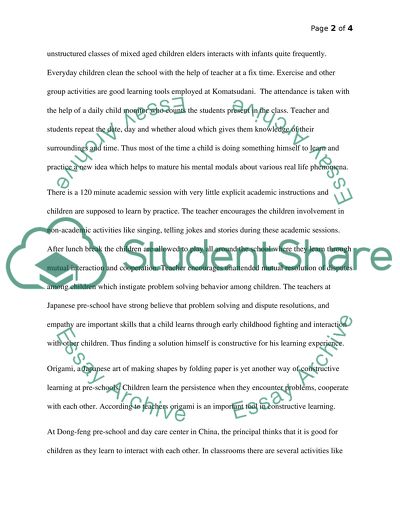Cite this document
(“Analysis of Pre-school in Three Cultures Essay Example | Topics and Well Written Essays - 1000 words”, n.d.)
Retrieved from https://studentshare.org/education/1414638-analysis-of-pre-school-in-three-cultures
Retrieved from https://studentshare.org/education/1414638-analysis-of-pre-school-in-three-cultures
(Analysis of Pre-School in Three Cultures Essay Example | Topics and Well Written Essays - 1000 Words)
https://studentshare.org/education/1414638-analysis-of-pre-school-in-three-cultures.
https://studentshare.org/education/1414638-analysis-of-pre-school-in-three-cultures.
“Analysis of Pre-School in Three Cultures Essay Example | Topics and Well Written Essays - 1000 Words”, n.d. https://studentshare.org/education/1414638-analysis-of-pre-school-in-three-cultures.


